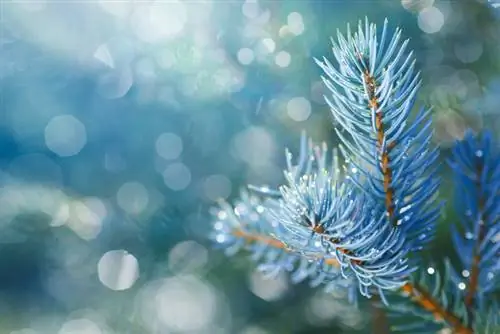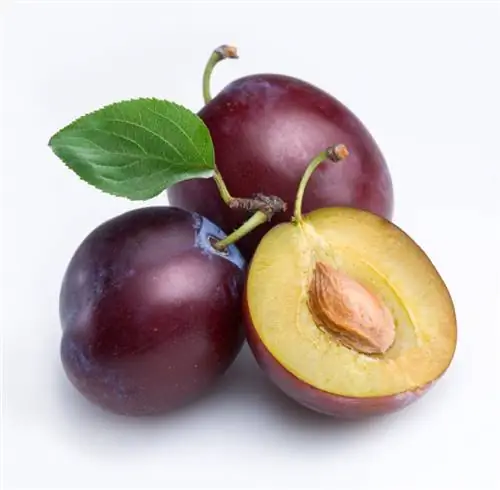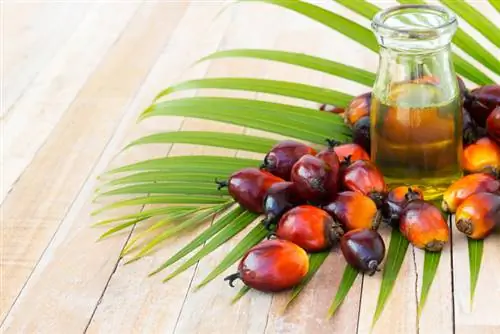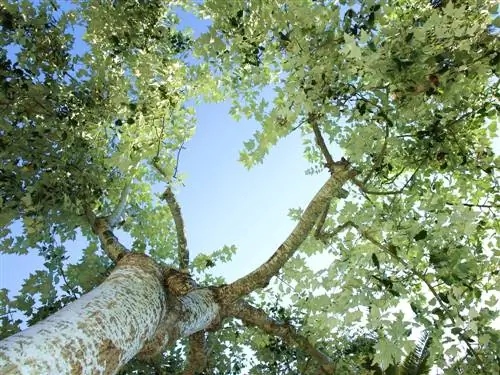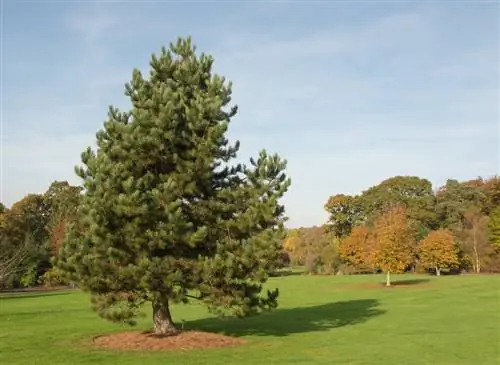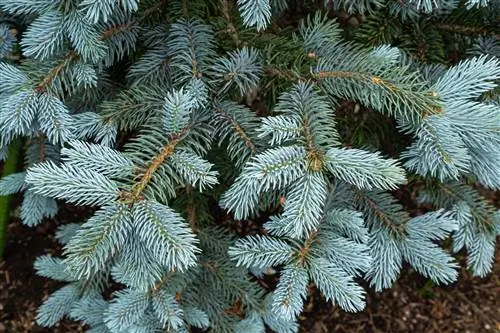- Author admin [email protected].
- Public 2023-12-16 16:46.
- Last modified 2025-01-23 11:20.
If interest in a new plant is aroused, experienced hobby gardeners use their profile as an initial contact. Get up close and personal with the outstanding attributes of a blue spruce. These properties characterize the Norway spruce.

What is a blue spruce and what properties does it have?
The blue spruce (Picea pungens) is an evergreen tree in the pine family (Pinaceae) that is native to the Rocky Mountains. It is characterized by its blue-gray needles, a growth height of up to 35 meters and a winter hardiness down to -40 degrees Celsius.
Systematics and appearance
The following profile aims to provide you with the most important information, which at the same time allows you to draw conclusions about planting a blue spruce as a house tree or Christmas tree.
- Plant family of the pine family (Pinaceae)
- Spruce genus (Picae)
- Name of the species: Norway spruce (Picea pungens)
- Common name: Blue spruce
- Native to the Rocky Mountains, Idaho, Wyoming to Arizona
- Evergreen tree with a height of up to 35 meters
- Tough, pointed needle leaves with blue-gray coloring
- Shallow roots with stable stability
- Annual growth: 30 to 40 cm
- Hardy to -40 degrees Celsius
From the age of 30, a blue spruce develops yellowish male cones with a reddish tinge, which turn straw yellow when fully ripe.
Usage
Thanks to its blue-gray needles, coupled with rapid growth, the blue spruce has made a name for itself as a popular Christmas tree. If the leaves weren't so coarse and pointed, the Norway spruce would undoubtedly top the annual ranking. Due to its soft needles and weeks of durability, the Nordmann fir is the undisputed leader in popularity.
Since the blue spruce - despite its shallow root system - is not very susceptible to wind, it is sometimes used as a year-round hedge to protect against prying eyes and strong winds.
Location requirements
In their natural habitat there is a cool, mild climate. Low temperatures in summer and low rainfall in winter dominate the general conditions here. This results in a broad site amplitude with a high tolerance for dry and moist air. Only in terms of lighting conditions does the spruce prefer the brightest, sunny place possible.
Their shallow root system establishes itself excellently in any nutrient-rich, fresh, moist soil. A clayey-gravelly structure meets the requirements particularly well. A pH value between 6.5 and 7.5 is ideal, although this is not a compelling premise.
Tip
Friends of the art of bonsai like to admire a blue spruce, especially because of its shimmering blue needles. Since the Norway spruce proves to be difficult to cut, other pine plants come into focus. The Japanese black pine is ideal for cultivation as a mini tree, as it tolerates any treatment with scissors.

